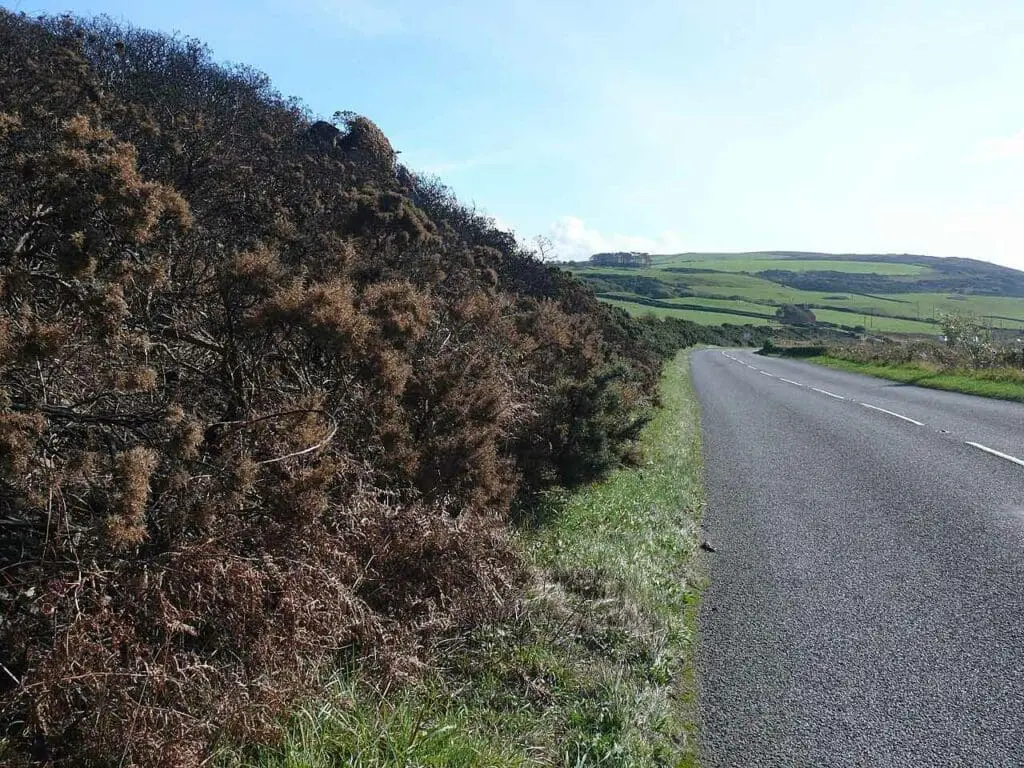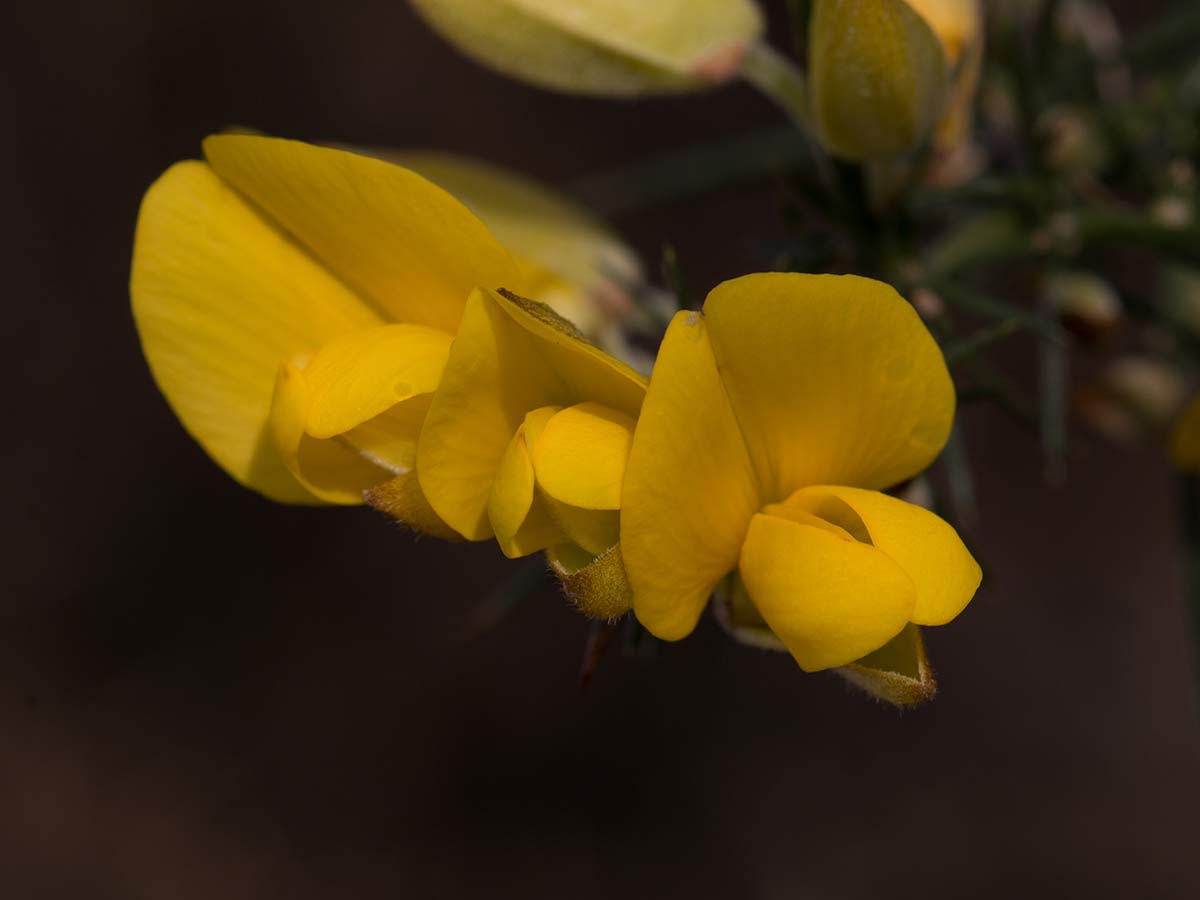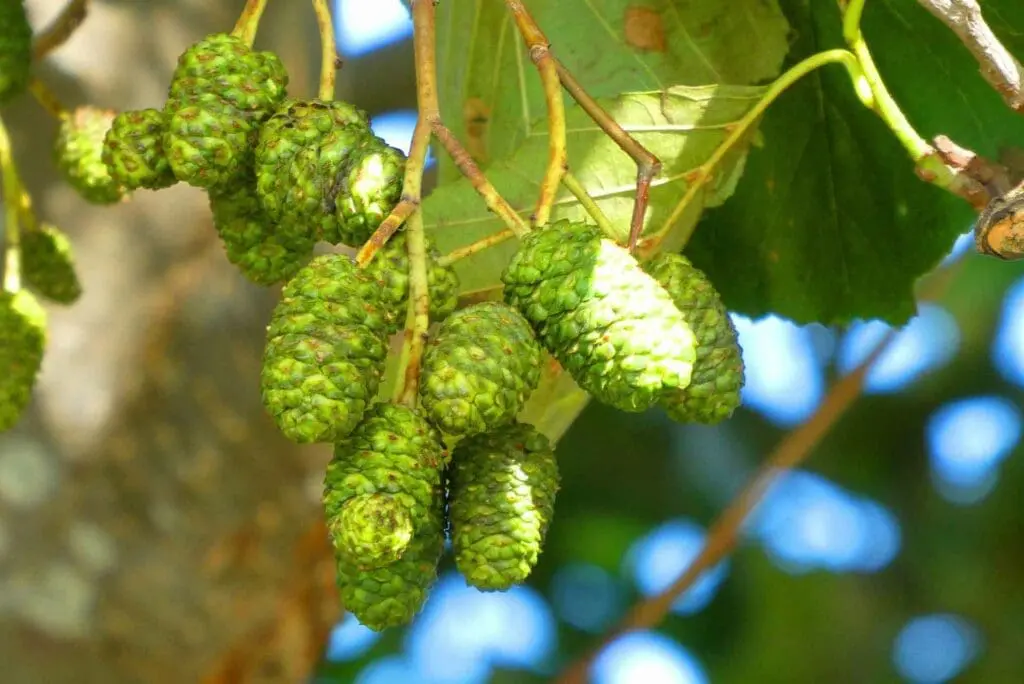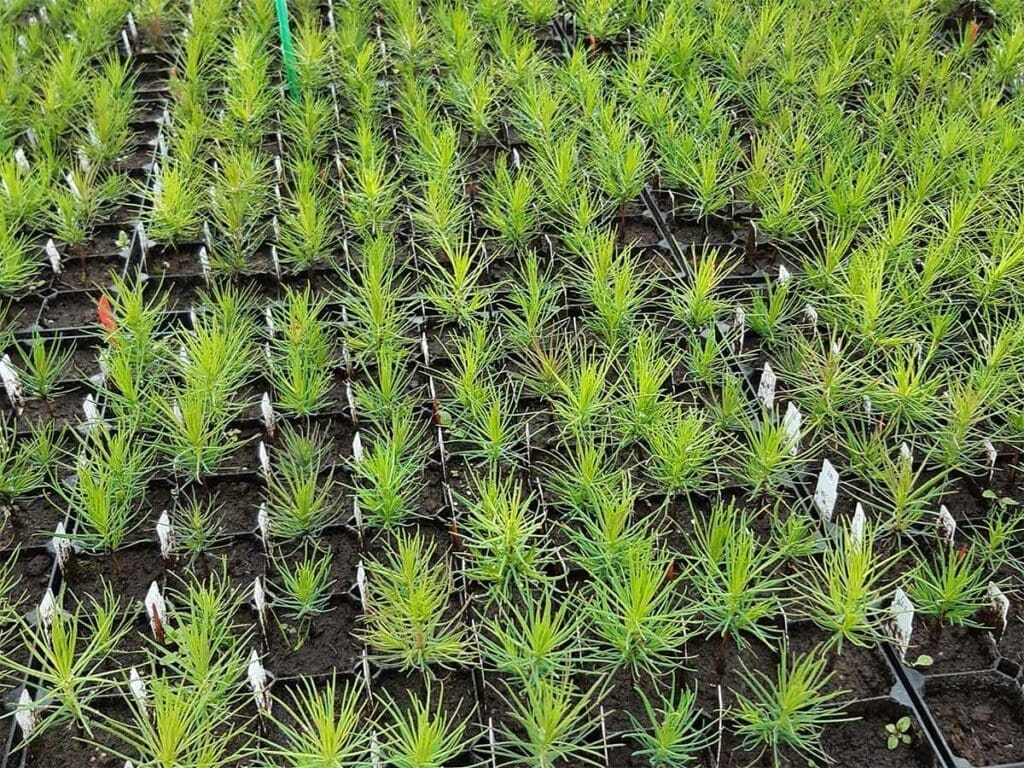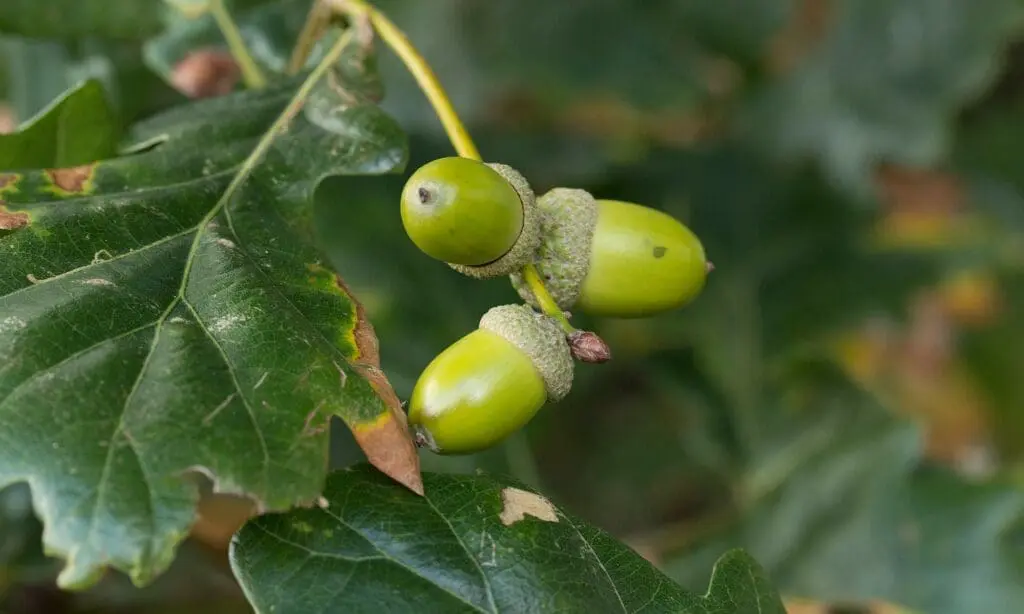- Common name: Gorse
- Scientific name: Ulex europaeus
- Family: Legume (Fabaceae)
- How to grow Gorse
Gorse is an evergreen shrub with vibrant yellow flowers, distinctive spiny leaves and a noticeable coconut scent when in bloom, especially when the sun is shining.
This hardy plant is native to Western Europe and can thrive in various environments. It is commonly found in heathlands, coastal areas, in hedgerows and fields, and open woodlands, .
Gorse leaves
Despite the fact they look like spines, the leaves of gorse are exactly that, leaves that are tough and spiny. The very young leaves of gorse seedlings are actually trifoliate – like little clover leaves! The spiny leaves protect the plant from drought because they are less prone to losing moisture.
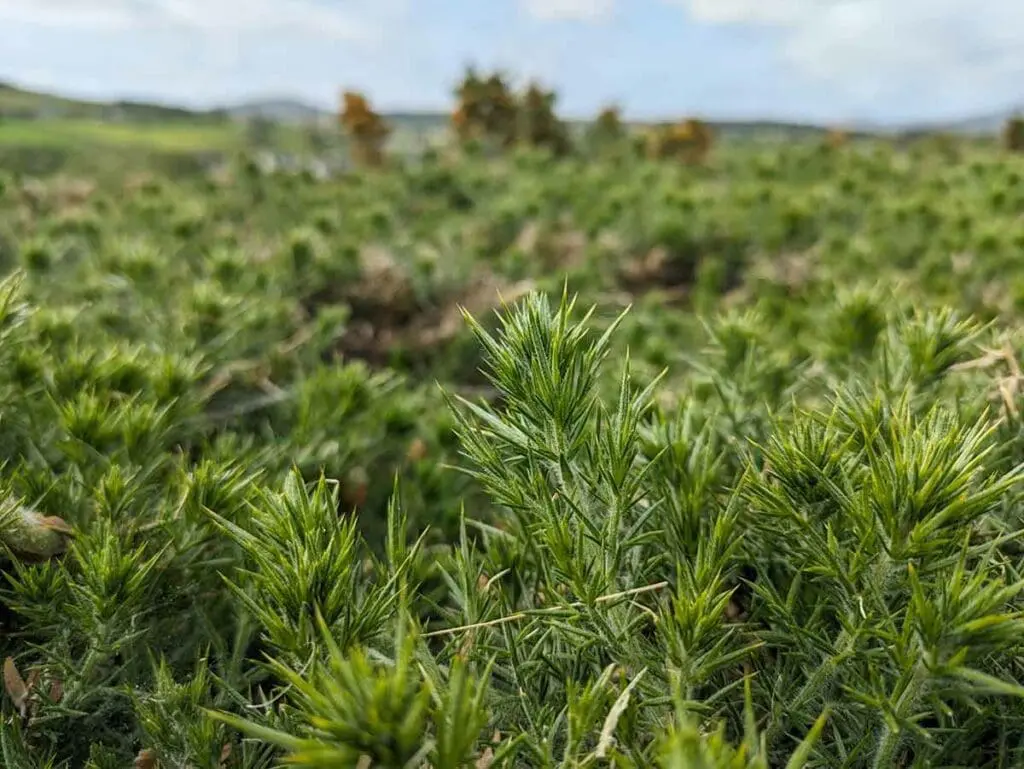
Gorse flowers
Gorse is one of the first of our trees and shrubs to flower each year, often blooming for the longest time as well. Its bright yellow flowers usually appear in March, but they can bloom all year round, even as early as January. The flowers look like pea flowers and smell distinctly like coconut.
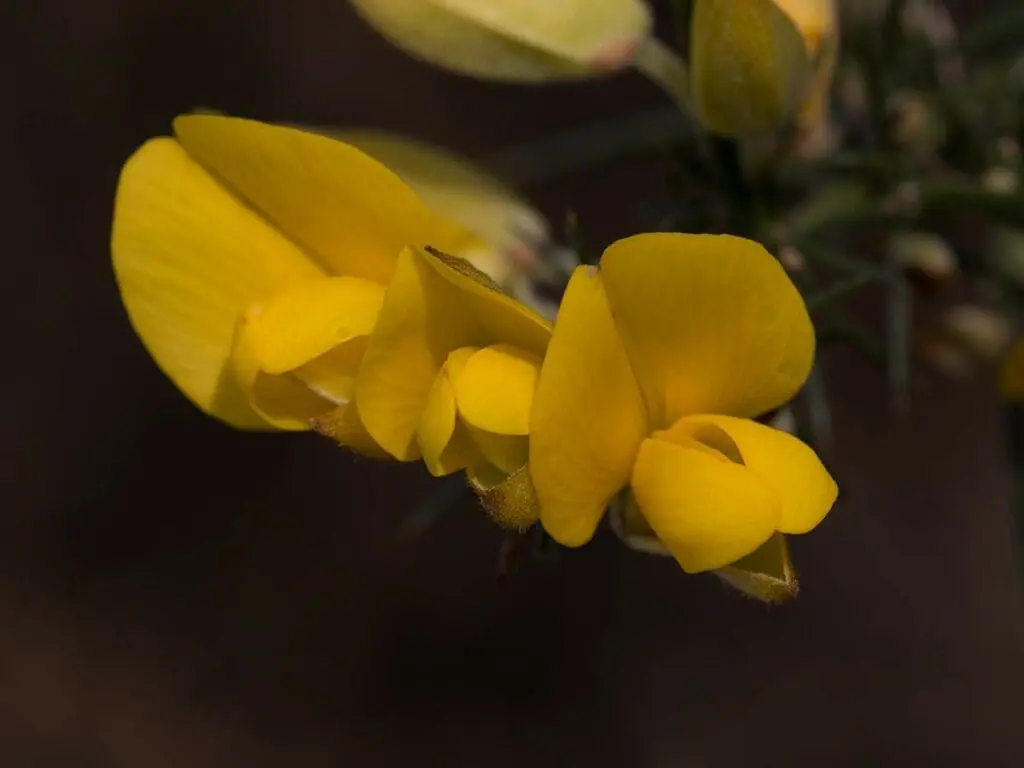
Gorse fruits – pods
The seeds of gorse grow in pods that burst open with a ‘pop’ in late summer – stand anywhere near a gorse bush in late-July sunshine and you will hear them clearly.
The pods ripen to brown or black and are a bit hairy. These seeds can remain viable for decades! They sprout best when they’ve been heated to high temperatures – they’re adapted to survive and germinate after a fire.
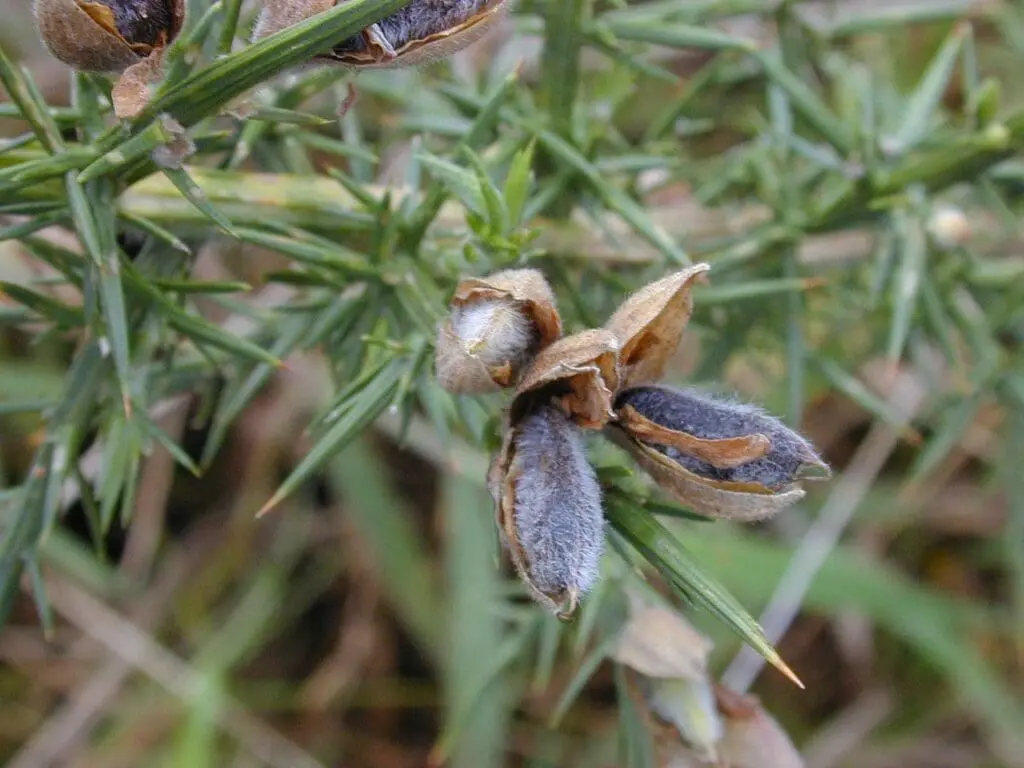
Gorse bark and stems
Young gorse stems are green. As gorse matures, the stems become woody and develop a rough texture. The bark is generally thin and can range in colour from light brown grey. These tough, spiny stems help the plant protect itself from grazing animals and to survive in harsh conditions.
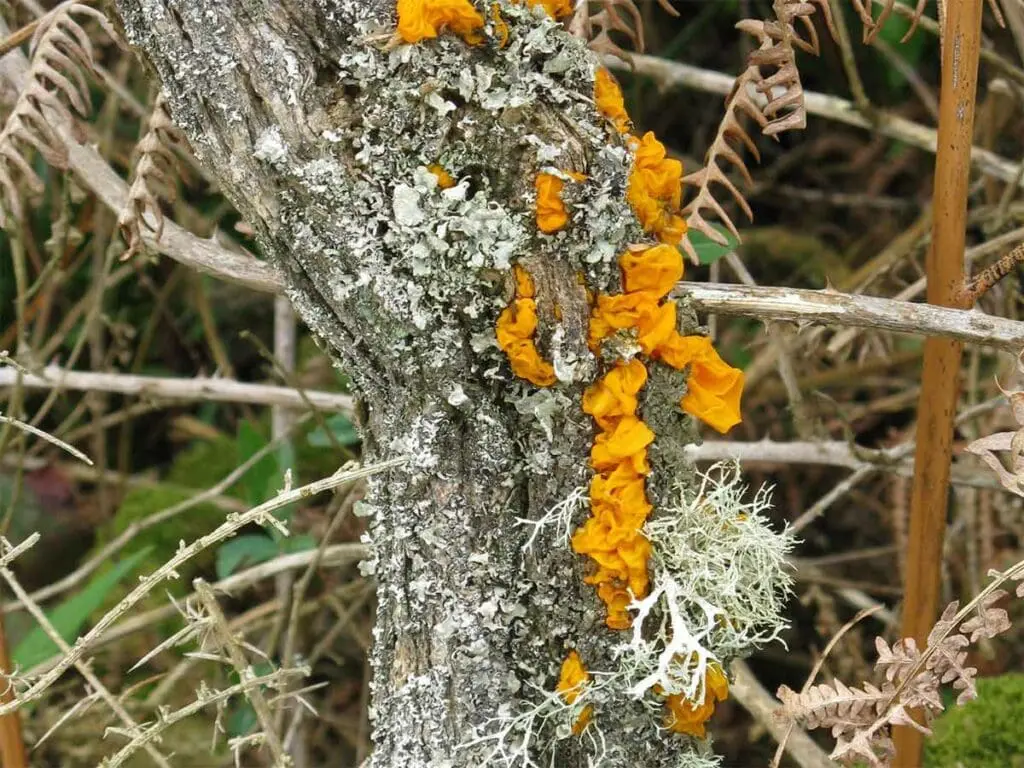
Where gorse grows
Gorse is a hardy plant and can endure tough living conditions to which it’s well adapted.
Gorse enjoys mild winters and grows best in poor, dry, sandy soils. You can find it near the beach, on sand dunes, and in areas where the ground has been disturbed. It can also grow in dry, heathland areas because it can handle acidic soil.
Gorse belongs to the Fabaceae family. Members of this family have special bacteria on their roots that help them take nitrogen from the air. These bacteria transform nitrogen from the air into a type that plants can use, which can be especially useful in poor soils.
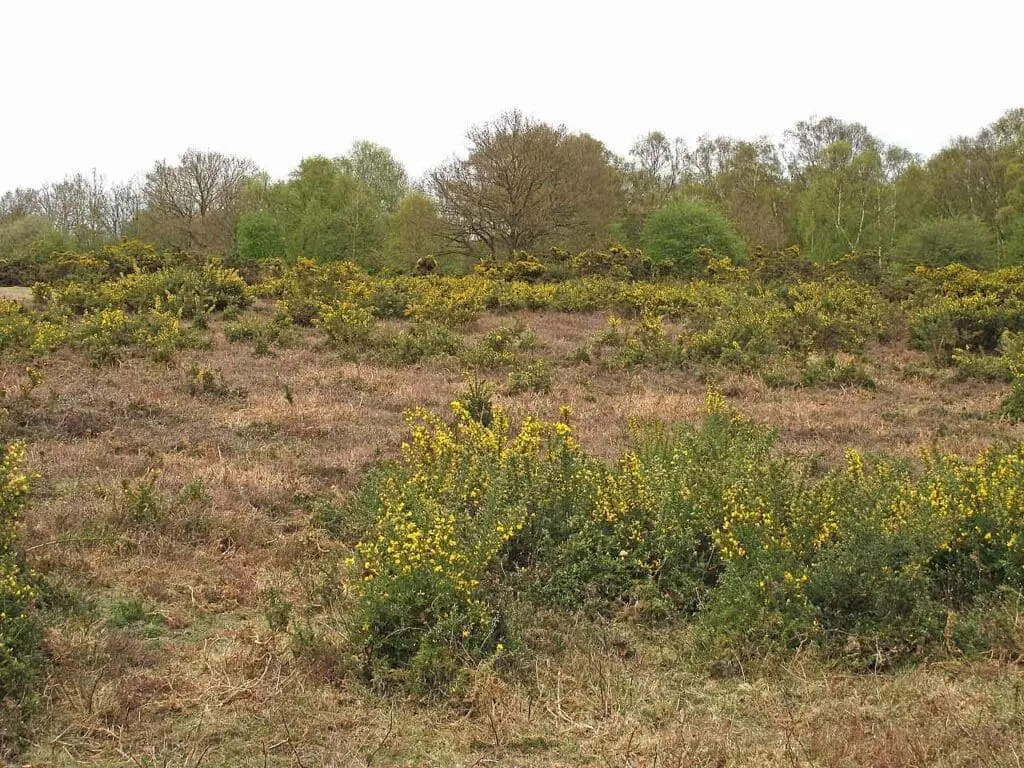
Gorse burns easily as it contains flammable oils and produces plenty of dead and dry material, but it regenerates readily and may have evolved to take advantage of conditions following a fire. Gorse seeds, as mentioned above, benefit from heat to help them germinate.
